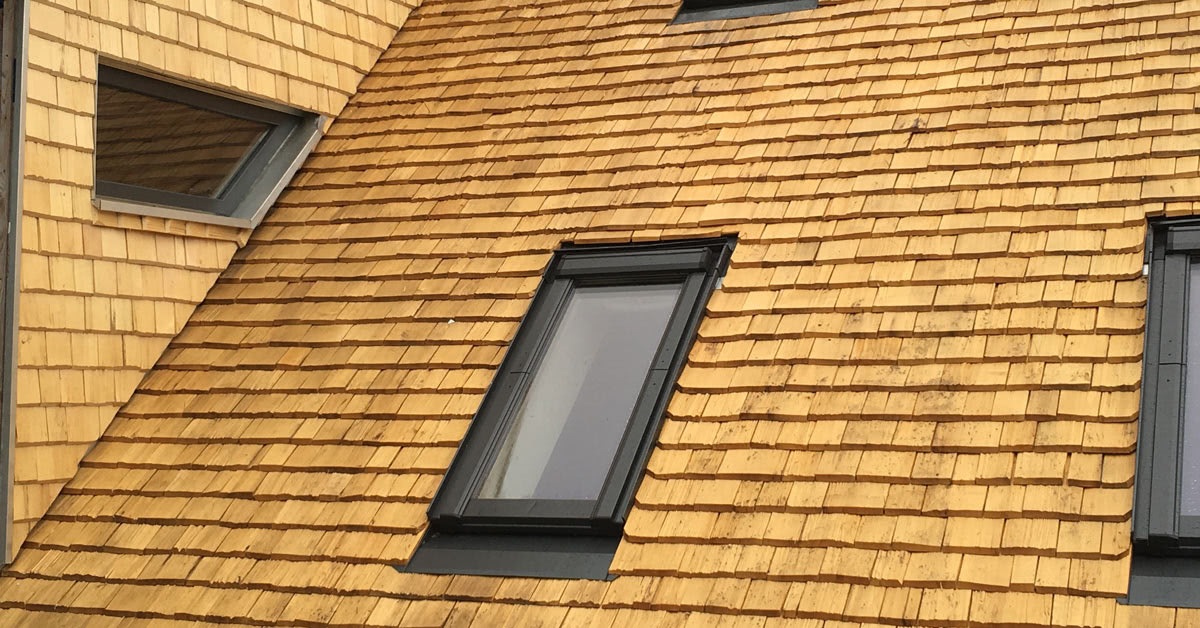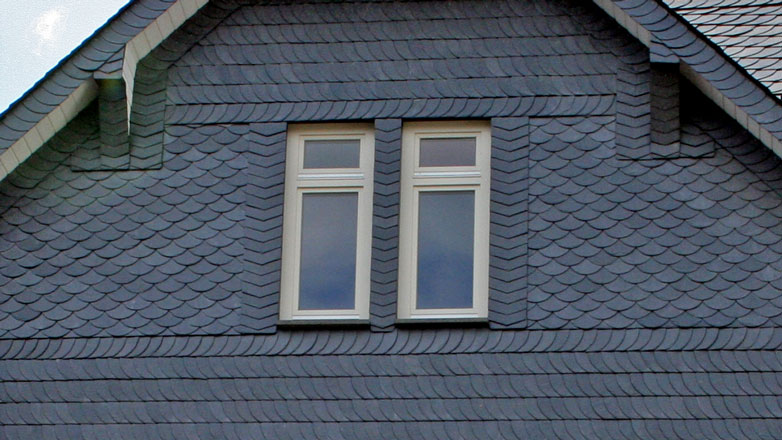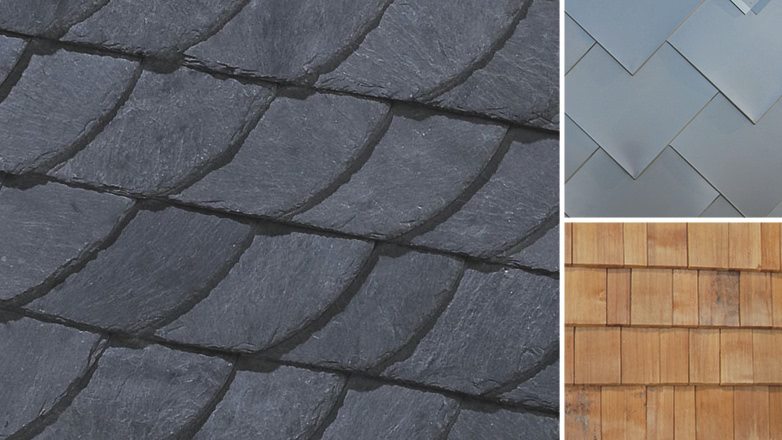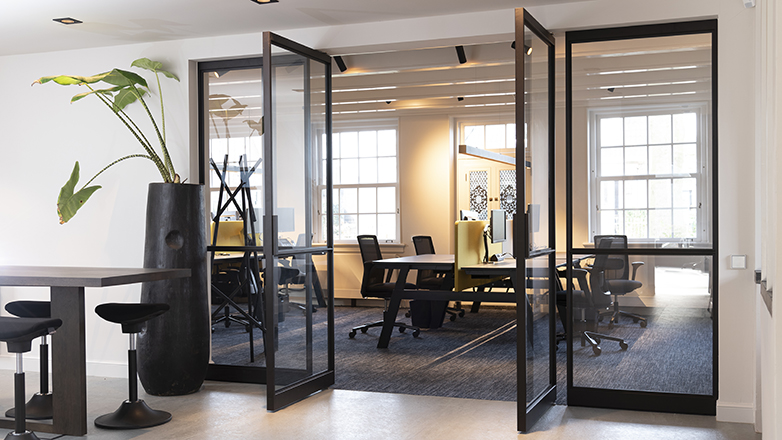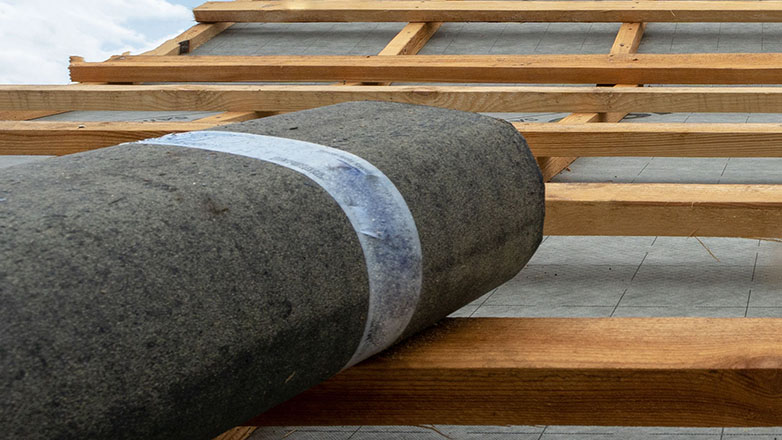Scaly houses – covered in shingles from top to bottom
With their similarity to fish scales, shingles are laid evenly and in small pieces on top of each other to prevent rain and snow from entering a building from the outside. Shingles can be used for the entire building envelope, the roof as well as the façade. Primarily, they cover our roofs, where they present an alternative to the predominant clay or concrete roof tiles.
What constitutes as a shingle?
The term shingle originates from the Old Norse word “skilja” and means to split or separate. The shingle is therefore produced by splitting something. The existence of shingles reaches thousands of years back to archaeological finds from excavations, where sheds were insulated with tree bark. Apart from the classic rectangular shape, there are also decorative shingles. These can be, among others, shaped semi-circular or pointed, as a segment or as a deer’s tongue.
Which types of shingles are there?
Today the word shingle is not only associated with the manufacturing process but rather with its shape and purpose. Thus, besides the traditional wooden shingles, there are also shingles made of slate, bitumen, and metals such as aluminium and zinc. In contrast to the soft wooden roof, those are classified as hard roofs.
The original shingle made from wood, a renewable raw material
The production and processing of wood shingles is costly. Traditionally, a shingle maker splits the wood panels by hand. Split shingles create a vivid covering due to their uneven surface. An even cover is achieved by sawn wood shingles, whose smooth surface can also be easily painted. However, the cut wood shingles are more sensitive to water due to damage of the wood fibres while sawing.
Naturally, native wood species such as fir, larch, oak, or pine are preferred in Europe. In Germany, depending on the region, oak is more common in the north while spruce or larch is mostly used in the south. However, you can also find the very durable cedar wood from North America, and domestic species are often imported as well.
A roof covered with wood shingles according to DIN 68119 has a life span of up to 30 years, depending on the weather. The durability will also be reduced by a location in the shade or high levels of air pollution. In comparison, a shingle covering for the façade is more durable than other wood panelling. After four years, a weathering effect is already clearly visible. However, there is a transitional phase until it gains uniformity: after about ten years, a consistent grey discolouration occurs, which contributes to the characteristic appearance of a wooden façade.
Slate as a long-lasting natural product from close by
Besides wood shingles, slate shingles are another natural product. Slate is split after mining, so the original definition of shingles also applies. Slate covering has a long tradition as it was already found with remains of ancient Romans. It is more durable, naturally water- and fire-resistant and therefore more weatherproof than wood covering and has a life span of over 100 years. There are over 30 possible types of coverings with slate. In addition to the rectangular covering, pointed angles, fish scales, arched or honeycomb, other decorative covering types are popular. The “old German” style is considered as the most demanding type. Slate is a natural stone and therefore characterised by natural colour variations. These can be minimised by choosing slate from the same deposits, alternating the use of slate from several pallets creates an even colour balance.
Renovation and hard winters made easy by bitumen shingles
The bitumen shingle has proven itself as a flexible and light roof covering and therefore is considered as particularly pragmatic. Since the 19th century, bitumen-based roof shingles have been industrially produced. They are particularly weatherproof and usually last for 25 to 35 years. They are standardised in DIN EN 544. Most times a combination of special bitumen with glass fleece inserts, high-quality granulates and thermo-adhesive surfaces is used. The available shapes include the classic ones – rectangle, triangle, and plain tile – as well as a variety of special shapes. Due to colouring there is a wider range of colours than with wood or slate, including brick red or special copper and zinc finishes. This allows them to blend in harmoniously with their surroundings.
The quality range is widely spread, a high quality can be recognized by the bitumen mass (minimum requirement greater than 1300 g/m²), which makes the shingles tight and durable. Bitumen shingles are often used for roof renovations. Their low weight of about 8 to 11 kg/m² is beneficial in terms of the static, especially with weak roof trusses, and existing substructures can be retained if necessary.
Metal as a flexible solution for a variety of looks
There are also various shingles made of metal. They can be made of copper, zinc, aluminium, or coated steel. Aluminium and steel can be colour coated, so there is a wide range of colours possible. Copper and zinc, on the other hand, tend to be laid uncoated, which gives them a particularly beautiful patina. They are also pre-weathered or pre-oxidised to ensure even ageing. Metal shingles are traditionally found on special roof shapes, churches, or other historical buildings, especially on domes and arches. Due to their high flexibility they can also be used for unusual building shapes. Aluminium in particular, with its low weight, offers advantages during installation. Popular metal shingle shapes are rhombus and rectangle. The lifetime of metal coverings is often only limited by the substructure.
What do we like about shingles?
The attention to detail in combination with the big range of design options make shingles interesting, some might even say fascinating. There is a wide choice of materials, coatings, colours, and types of covering. The combination of different widths and shapes enlivens the appearance of the façade. From magical to rustic to modern, everything is possible. What is used in common tradition, for example slate slabs in gables, can lead to great results: Due to the small size and various shapes corners can be laid out as well as buildings shaped with curves and arches.
A building turns into an eye-catcher when completely wrapped in shingles from top to bottom. A few shingles can already make a great difference and set special highlights. Though the small-scale, layered installation is much more complex than covering larger areas with fewer elements, especially as a wall covering. In turn you get a building that will last for many years to come while maintaining an appealing design. The patina of wood and metal shingles, but also the colouring of slate create attractive surfaces.

Pia Gottszky
Author and journalism expert with a focus on architectural topics in a social context.
